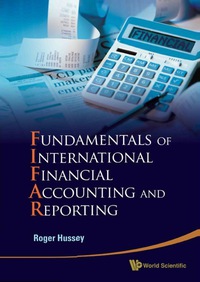Eroya Fabrikker A/S of Bergen, Norway, is a small company that manufactures specialty heavy equipment for use in North Sea oil fields. The company uses a job-order costing system that applies manufacturing overhead cost to jobs on the basis of direct labor-hours. Its predetermined overhead rate was based on a cost formula that estimated $360,000 of manufacturing overhead for an estimated allocation base of 900 direct labor-hours. The following transactions took place during the year: a. Raw materials purchased on account, $200,000. b. Raw materials used in production (all direct materials), $185,000. c. Utility bills incurred on account, $70,000 (90% related to factory operations, and the remainder related to selling and administrative activities). d. Accrued salary and wage costs: Direct labor (975 hours) $ 230,000 Indirect labor $ 90,000 Selling and administrative salaries$ 110,000 e. Maintenance costs incurred on account in the factory, S54,000. f. Advertising costs incurred on account, $136,000. 8. Depreciation was recorded for the year, 595,000 (80% related to factory equipment, and the remainder related to selling and administrative equipment). h. Rental cost incurred on account, $120,000 (85% related to factory facilities, and the remainder related to selling and administrative facilities). i. Manufacturing overhead cost was applied to jobs, $ ? j. Cost of goods manufactured for the year, S770,000. k. Sales for the year (all on account) totaled $1,200,000. These goods cost $800,000 according to their job cost sheets. The balances in the inventory accounts at the beginning of the year were: Raw Materials $30,000 Work in Process $21,000 Finished Goods $60,000 Required: 1. Prepare journal entries to record the preceding transactions, 2. Post your entries to T-accounts. (Don't forget to enter the beginning inventory balances above.) 3. Prepare a schedule of cost of goods manufactured. 4A. Prepare a journal entry to close any balance in the Manufacturing Overhead account to Cost of Goods Sold. 4B. Prepare a schedule of cost of goods sold. 5. Prepare an income statement for the year. Reg 1 Reg 2 Reg 3 Req 4A Reg 4B Req 5 Post your entries to T-accounts. (Don't forget to enter the beginning inventory balances above.) Sales Beg. Bal. Beg. Bal. Accounts Receivable 30,000 185,000 200,000 45,000 b. 230,000 230,000 End. Bal. End. Bal. Cost of Goods Sold Beg. Bal. Raw Materials 30,000 200,000 Beg Bal. End. Bal. End. Bal. 230,000 Work in Process Manufacturing Overhead Beg. Bal. Beg. Bal. End. Bal End. Bal. Advertising Expense Beg. Bal. Beg. Bal. 1 Finished Goods 60,000 800,000 770,000 30,000 830,000 830,000 30,000 30,000 0.00 End. Bal. End. Bal. Accumulated Depreciation Utilities Expense Accumulated Depreciation Utilities Expense Beg. Bal. Beg. Bal. End. Bal. End. Bal. Accounts Payable Salaries Expense Beg. Bal Beg. Bal. End. Bal. End Bal End. Bal Depreciation Expense Salaries & Wages Payable Beg. Bal. Beg. Bal. End. Bal. End. Bal. Rent Expense Beg. Bal. End. Bal. End. Bal Depreciation Expense Salaries & Wages Payable Beg. Bal. Beg. Bal. End Bal End. Bal. Rent Expense Beg. Bal. End. Bal












